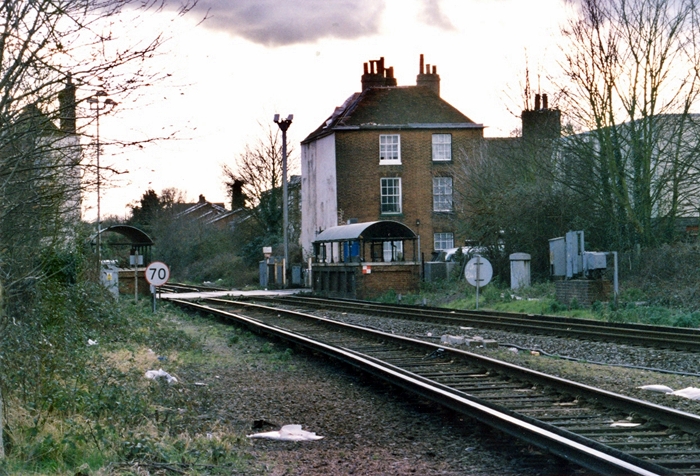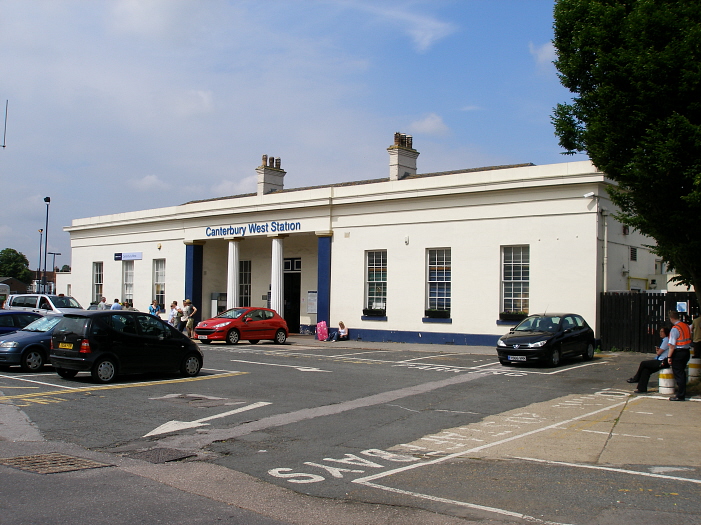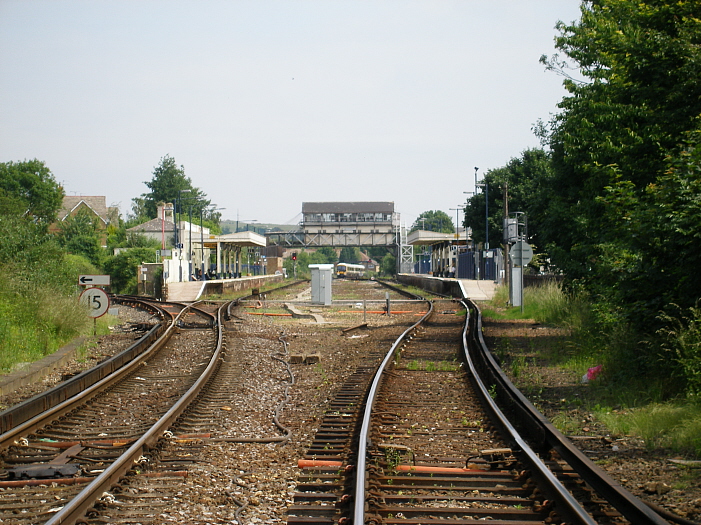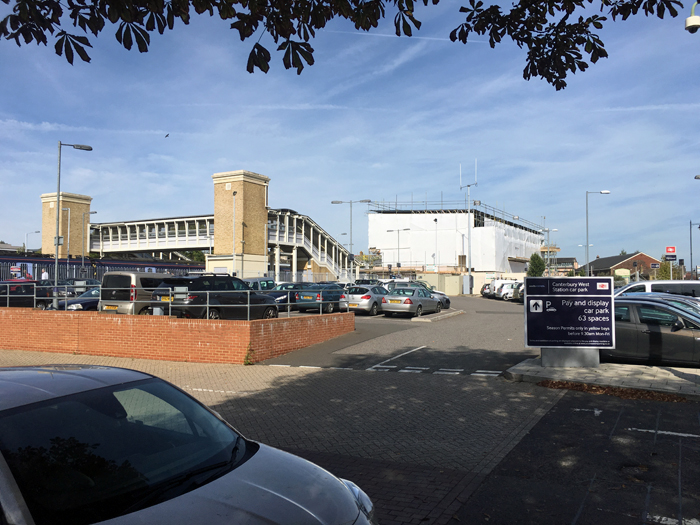
In the meantime, it had been a steady decline for the Canterbury & Whitstable branch, and passenger services along the line were no more from 1st January 1931. The single-track to Whitstable Harbour was, however, retained for freight traffic, the majority of it being coal. The Elham Valley Railway had been similarly floundering, although like the Whitstable branch, freight traffic was still keeping the route’s head just above water. Single line working between Canterbury and Lyminge was implemented by the SR on 25th October 1931, for both passenger and freight traffic. The line was mostly killed off by World War II, passenger services going only as far north as Lyminge, the first station on the route, from 1st December 1940. Complete withdrawal of this meagre service occurred on 3rd May 1943, but it was restarted on 7th October 1946, again serving Lyminge only. Passenger trains totally ceased on 14th June 1947, and thereafter, just freight remained. This lasted only a matter of months, being withdrawn on 1st October of the same year.
Like most stations, the British Railways era was one of significant rationalisation for Canterbury West; it also marked the closure of Southern England’s most historically significant branch line. From 1st December 1952, freight trains ceased to run along the line to Whitstable Harbour – or, at least, temporarily! On the night of 31st January 1953, East Anglia and the North Kent Coast were subject to a storm surge, which caused serious flooding, claimed over 300 lives, and wrecked many homes. Along the Faversham to Margate line, between Herne Bay and Birchington-on-Sea, much of the track had been swept away. The Whitstable branch was subsequently re-opened to freight traffic throughout February, to take supplies to the coastal town during the storm aftermath. It again closed, this time for good, bringing to an end an interesting chapter of railway history. The diminutive engine shed, dedicated to this branch, remained in use a while longer, not being condemned until March 1955. Five years later, preparations were made at the station as part of the Kent Coast Electrification Scheme’s ‘’Phase 2’’. The bay line which cut into the end of the ‘’down’’ platform was lifted, and its space in-filled, to bring it up to platform level. The former Whitstable branch platform line, behind the ‘’down’’ surface, was converted into an electrified loop; since 1953, it had been used as an additional freight siding. Platforms were lengthened at their southern ends by 85-feet, using concrete cast components, and a regular electric service commenced on 9th October 1961 – the full accelerated ‘’Phase 2’’ timetable did not, however, come into effect until 18th June of the following year. Whilst much of the then newly electrified network received colour light signalling, the majority of those lines in East Kent, that via Canterbury West included, were left untouched, retaining semaphore signals controlled from mechanical signal boxes.
Canterbury-Whitstable Track Lifted
[The Railway Magazine: February 1954]
The track of the Canterbury-Whitstable branch of the Southern Region has been removed. The branch closed at the end of 1952, but temporarily reopened for repair work after the flooding at Whitstable last year.
The goods yard closed to general freight on 13th September 1965, but the sidings remained in situ after this date. A pair of sidings also remained in use at the southern end of the ex-Whitstable branch platform line, exclusively for oil traffic, the latter of which continued right up until Spring 1993. The signal box, straddling the lines, continued to control an impressive layout, but a major loss had yet to come – that of the central through tracks. These were lifted during January 1979; few passenger trains had ever used these lines since the earliest years. Although this type of traffic did traverse the tracks in the form of diverted Victoria expresses, during the 1953 East Coast floods, the central lines had mainly been used by a few goods trains and empty stock movements. Over seven years earlier, on 19th July 1971, the level crossing 150-yards south of the platforms, upon ‘’St Dunstan’s Street’’, was converted to automatic operation, utilising lifting barriers and warning lights, all controlled via CCTV operation. On the turn of the 21st Century, many of the mechanical signalling strongholds in East Kent eventually became subject to modernisation. During 2003, work was underway to re-signal the Ashford to Minster line with colour aspect lights. A portacabin affair appeared beside the signal box gantry at Canterbury West, which was to house the ‘’Canterbury Wye Area Control Centre’’. This was formally commissioned on 15th December 2003, superseding signal boxes at Wye and Chartham; the gate box at Sturry was restored to a block post, and colour light signalling was used on the route throughout its entirety.
As part of the Government's £370 million ''Access for All'' scheme, a new footbridge is being erected at Canterbury West. Contractors arrived on site at the end of April 2010 to fence off the platform area earmarked for the new structure, which will incorporate lift towers on either side. The design to be employed is an elongated version of that which emerged at the rebuilt Greenhithe station in March/April 2008, for it is required to span a gap which once accommodated four tracks. The ''Access for All'' project was formally launched in March 2006, and it has been reported that over 200 stations will be recipients of new footbridges. Sadly, these are rather mean structures which detract from the character of many older stations, which have hitherto stood the test of time well. Canterbury City Council granted provisional planning approval for the footbridge in November 2009, and the commencement of high-speed CTRL services from the station in December of that year appear to have hastened its procurement.

At the Ashford end of the station is a level crossing, the subways of which were evidently built by the railway company. The tracks begin slewing towards the platforms here - sets of points were formerly located here when the two through lines were still in situ. © David Glasspool

The main station building today presents a smart appearance, and retains its imposing air, complete with the twin columns at the entrance. Neither the SER nor LC&DR produced architectural masterpieces at their stations in a city as historic as Canterbury, but thankfully major structures at both sites remain, to remind one of an earlier railway age. The main building at Canterbury West was at one time not unique - the SER produced a structure of fundamentally the same design at the terminus of Ramsgate Town. © David Glasspool

A Ramsgate-bound view clearly shows the large gap left by the lifting of the centre tracks in 1979. Not being on a major trunk line, through non-stop traffic at Canterbury West was minimal. On the left can be seen the electrified loop, curving behind the ''down'' platform. The loop follows the same course as that used by the platform line for the Canterbury & Whitstable branch. © David Glasspool

A northward view shows the footbridge, which was craned into position over the weekend of 4th/5th September 2010 and built at a cost of £541,000. The main building had disappeared under scaffolding and tarpaulin, presumably for cosmetic restoration. © David Glasspool
Return to the Kent Rail Homepage or alternatively, check for Updates.
Website & Copyright information - Links - Contact the Webmaster